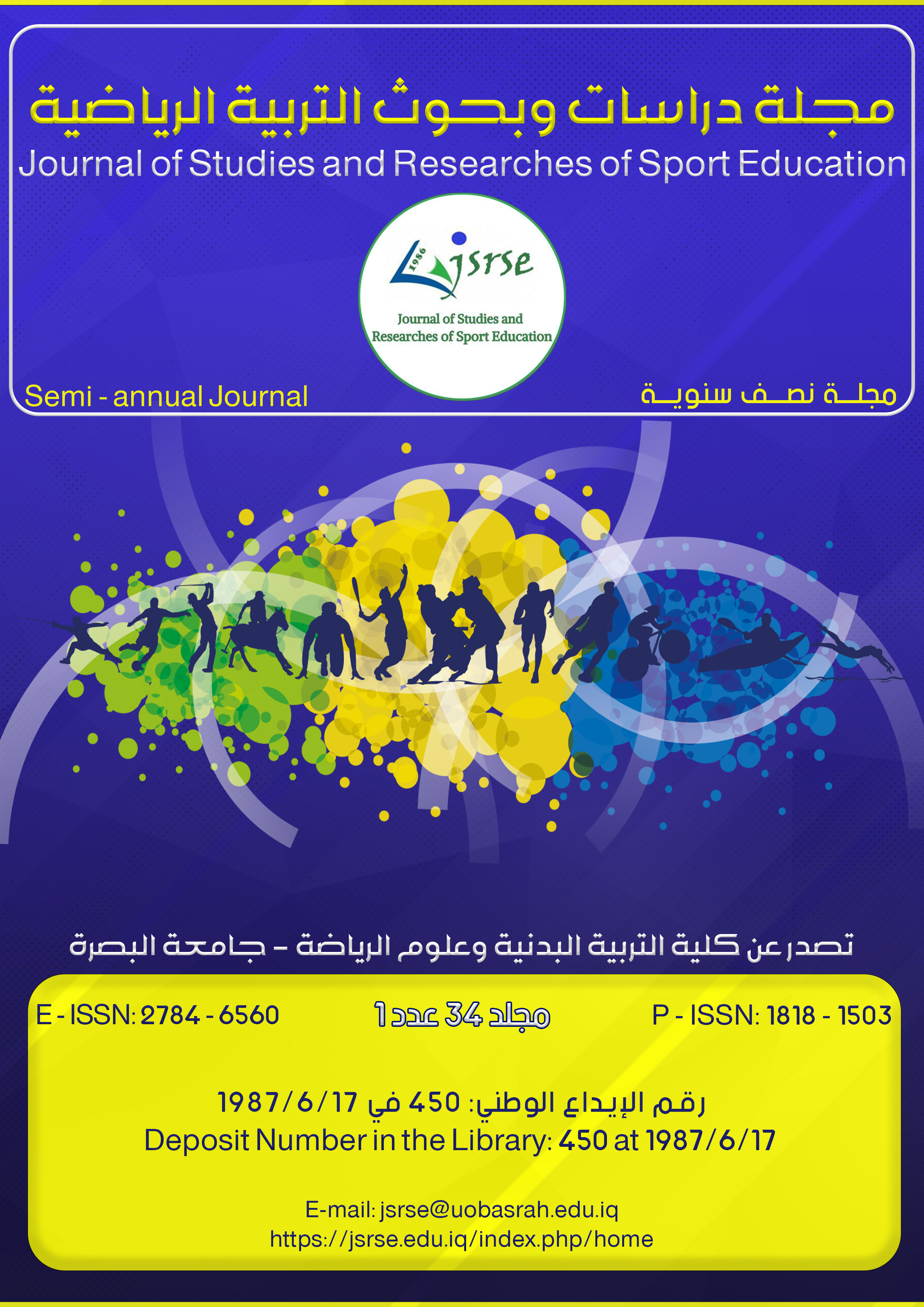The effect of technological sports applications for smart phones on learning some basic football skills for students aged 13-14 years
Main Article Content
Abstract
The aim of the research is to identify the effect of a sports application technology for smart phones in learning some basic football skills for first-year intermediate students for the academic year 2022/2023. The researcher used the one-group experimental approach on a sample of (24) students, and after conducting pre-tests, the application was used. The electronic skill exercises (control and control of the ball - dribbling - scoring) were administered to the research group within educational units that numbered (16) and two units per week, with a time of (40) minutes for one educational unit, after which post-tests were conducted for them. The researcher concluded that the technology Sports applications (smart phones) played a major role in developing the variables of his research. Accordingly, the researcher recommended that it is possible to adopt sports applications for smart phones with skill exercises that are consistent with the curriculum outcomes, including football, as it has a significant impact on the psychological and skill aspects of students.
Article Details

This work is licensed under a Creative Commons Attribution-NonCommercial 4.0 International License.
References
Aldewan, L. H., Abdul-Sahib, H. M., & al-Mayahi, S. J. K. (2013). Platform impact media super overlap (Alhiebermedia) to learn the effectiveness of the long jump for the Deaf Mute. Journal of Studies and Researches of Sport Education, 36, 27–41. https://www.iasj.net/iasj/article/94541
Ali, K. K. (2016). The effect of an educational program based on the cognitive load strategy associated with some educational technology methods in teaching the effectiveness of discus throwing and retention. Journal of the College of Basic Education , 22(95), 922–942. https://www.iasj.net/iasj/article/115962
Alsaeed, R., Hassn, Y. , Alaboudi, W. , & Aldywan, L. (. (2023). Biomechanical analytical study of some obstacles affecting the development of football players. International Journal of Physical Education, Sports and Health, 10(23), 342–346. https://doi.org/10.22271/kheljournal.2023.v10.i3e.2967
Hussein BadrKhalaf, LAMYAA، HASAN MUHMMED AL-DEWAN, & THulfiqar، Saleh Abdul-Hussein. (2021). The impact of the Zahorek model on the development of students’ football dodge skill. Journal of Studies and Researches of Sport Education, 66, 173–185. https://www.iasj.net/iasj/article/213565
Madin Saud. (2015). The effect of Omani university students’ use of the social networking application WhatsApp [Master’s thesis]. Yarmouk University.
Mufti, I. H. (1994). What is new in the physical, skill and tactical preparation of the football player. Dar Al-Fikr Al-Arabi.
Muwafaq, A. M. (2007). Tests and Tactics in Football. Dar Degla.
Rafik Laboukh. (2021). The effect of a proposed training program to learn some basic skills in football for 9-12 years old [Master’s thesis]. Mohamed Boudiaf University.
Rania, M. Q. (2015). Sleep problems among pre-school children and their relationship to the use of technological devices. Childhood Magazine, Faculty of Kindergarten, 9, 87.
Saleh, C. H., & Saad, L. A. K. (2021). The effect of an educational program using the educational modules method in learning the skills of running with the ball and passing with football for students. Journal of Studies and Researches of Sport Education, /(67), 282–295. https://www.iasj.net/iasj/article/213529
Sallis et al. (2001). Determination of youth Physical Activity . The Cooper Institute ,Dallas , USA, 214.





 IASJ
IASJ CC-BY-4.0
CC-BY-4.0 turnitin
turnitin ISSN
ISSN DOAJ
DOAJ Crossref
Crossref GoogleScholar
GoogleScholar Orcid
Orcid